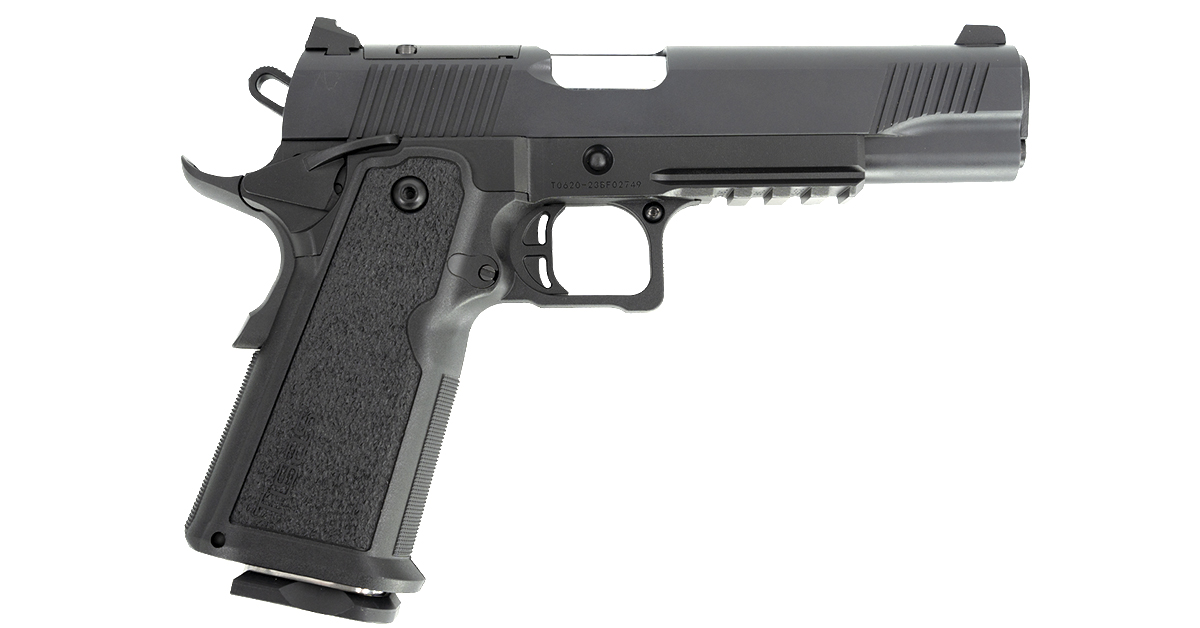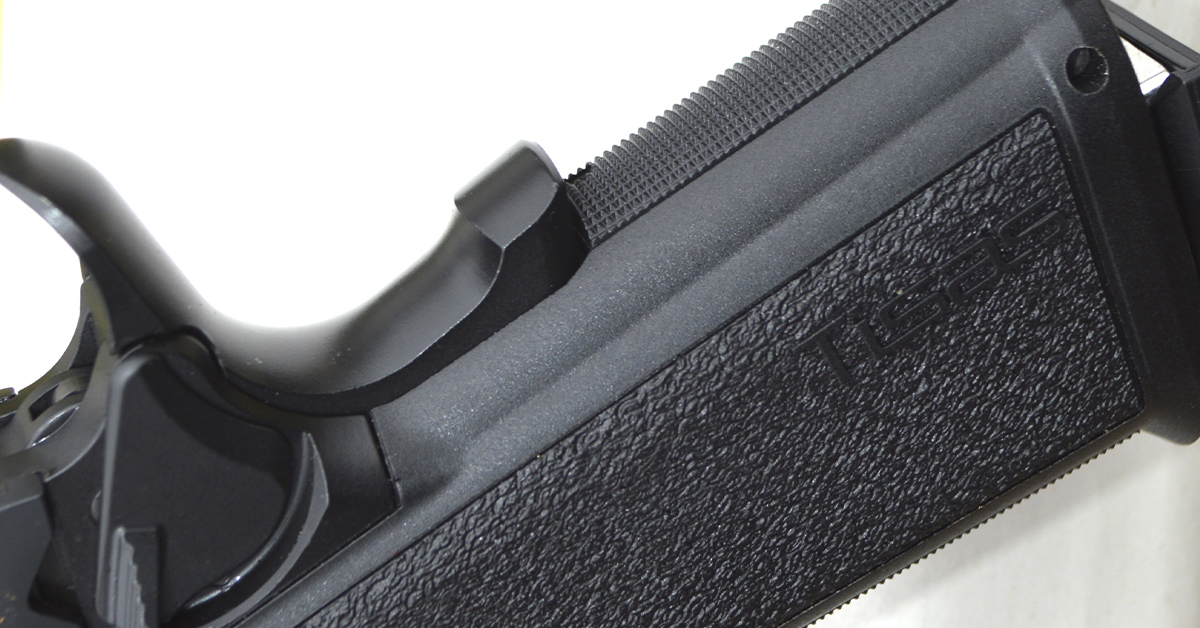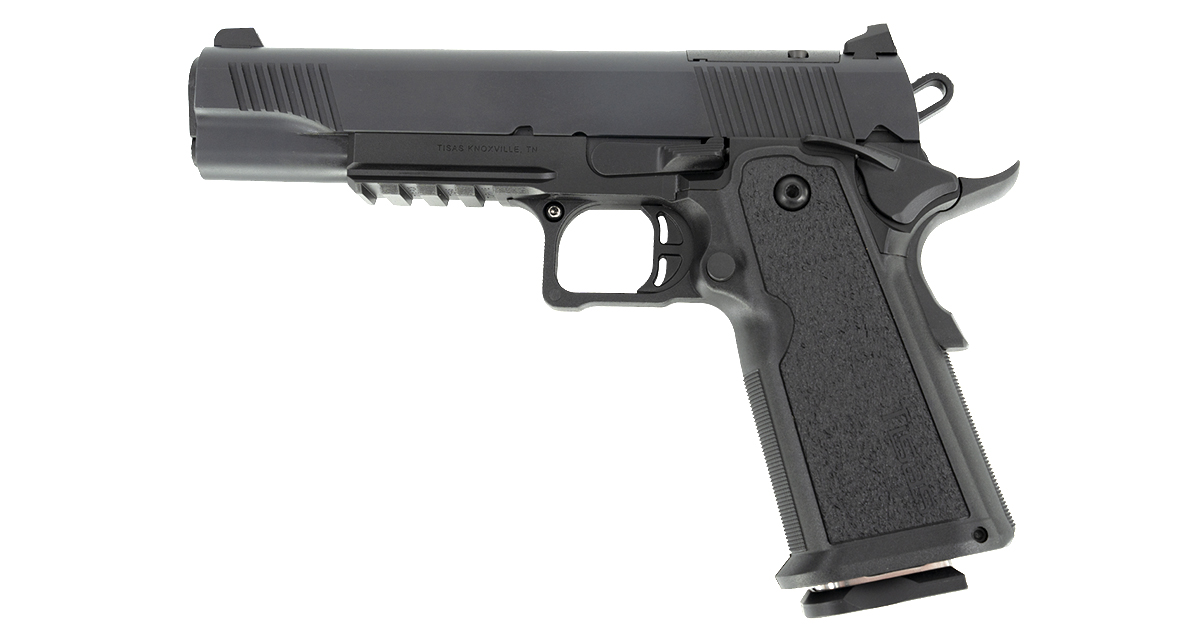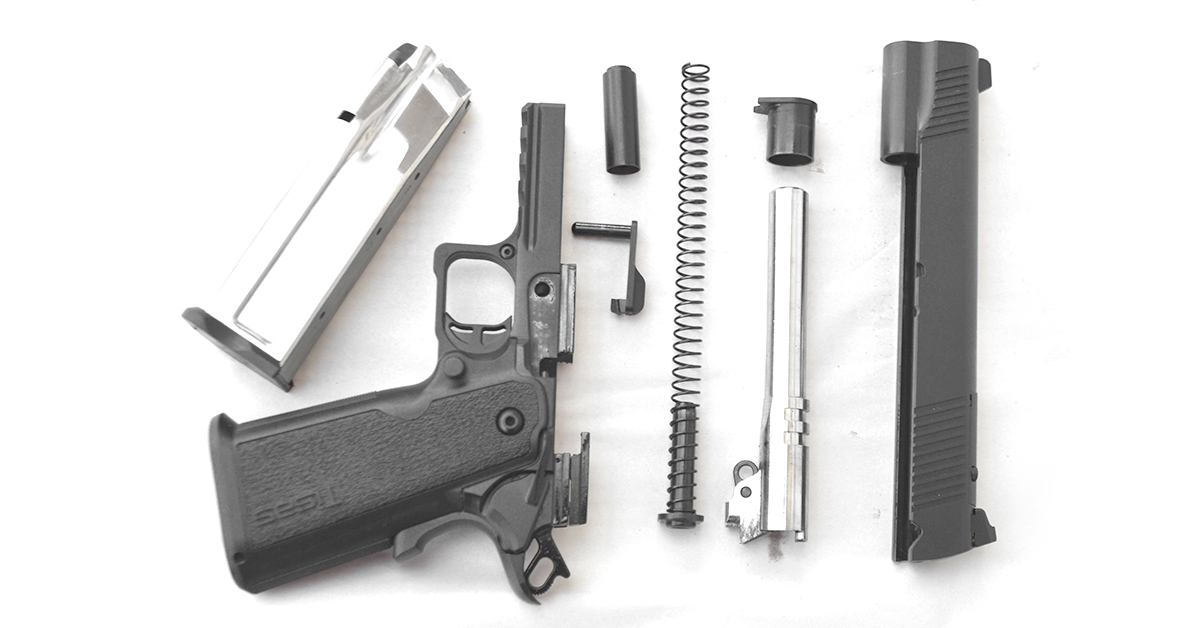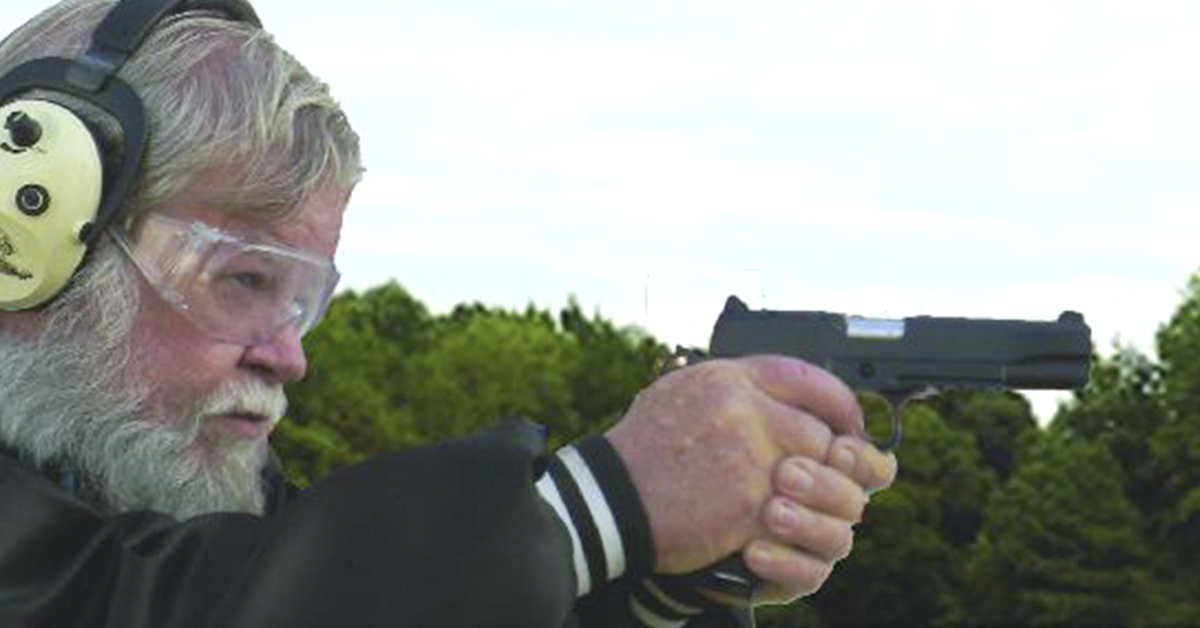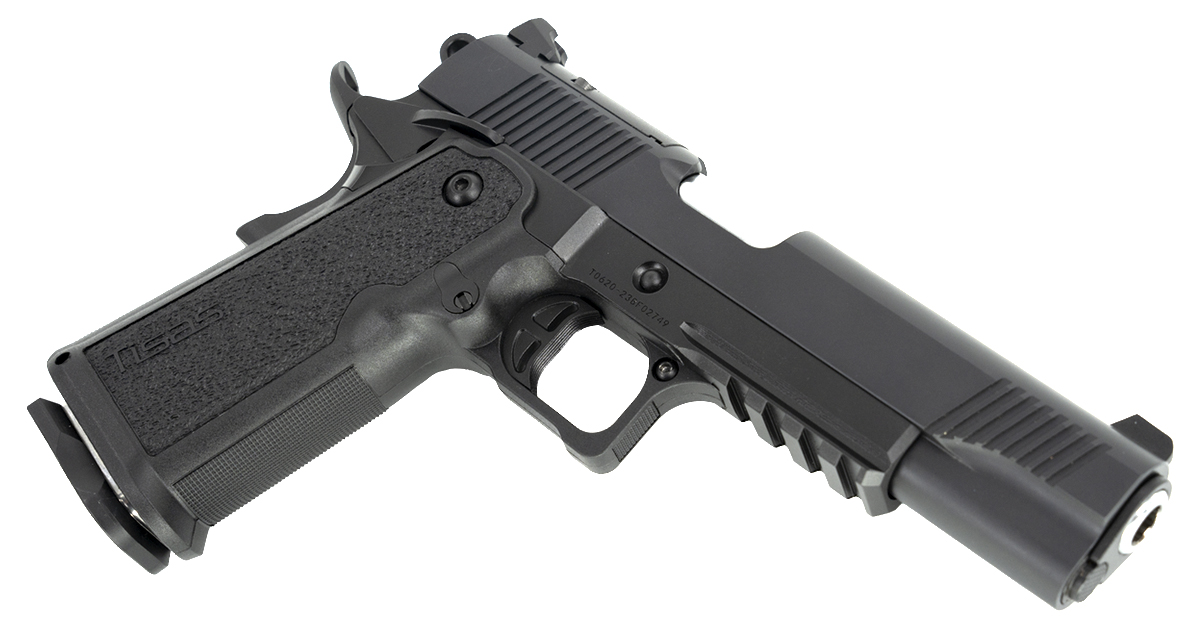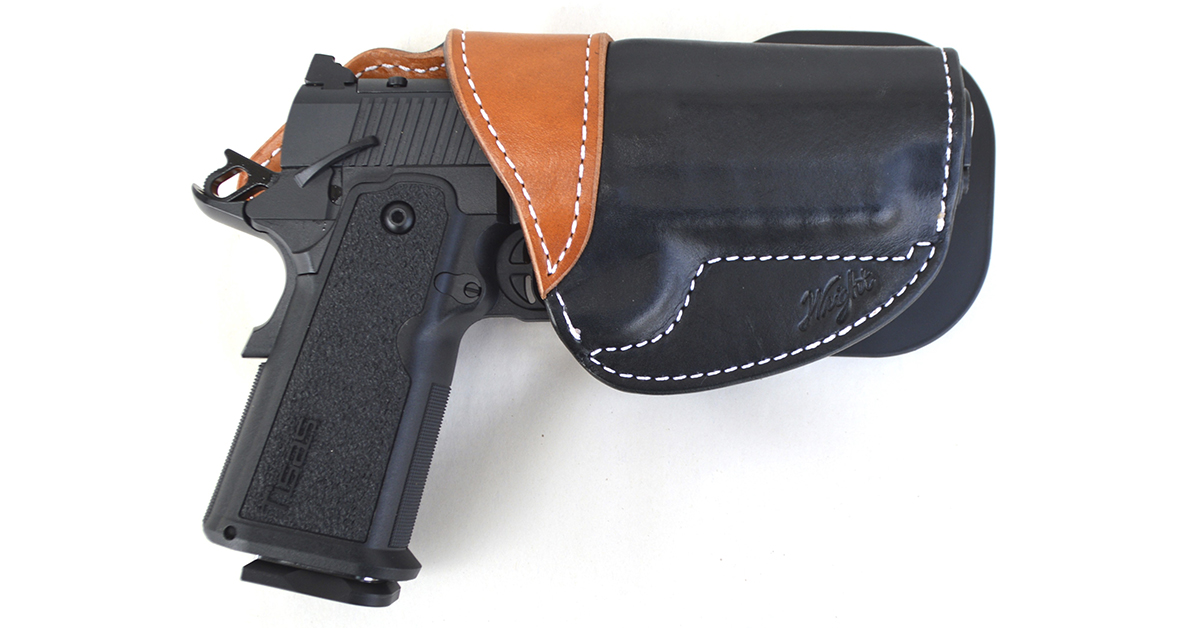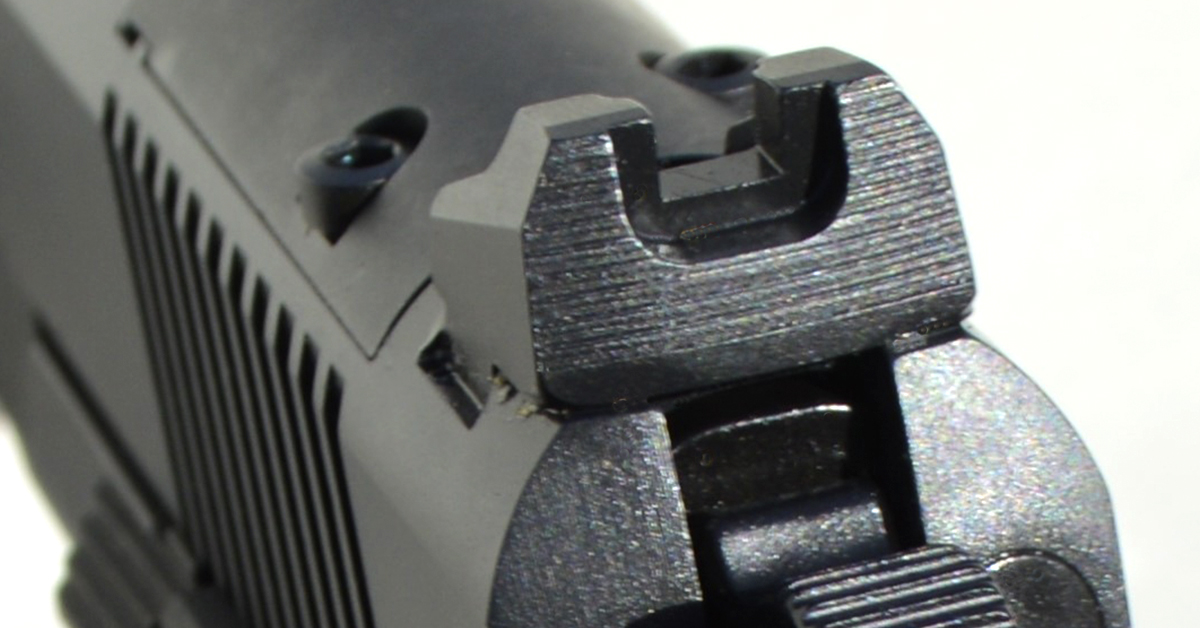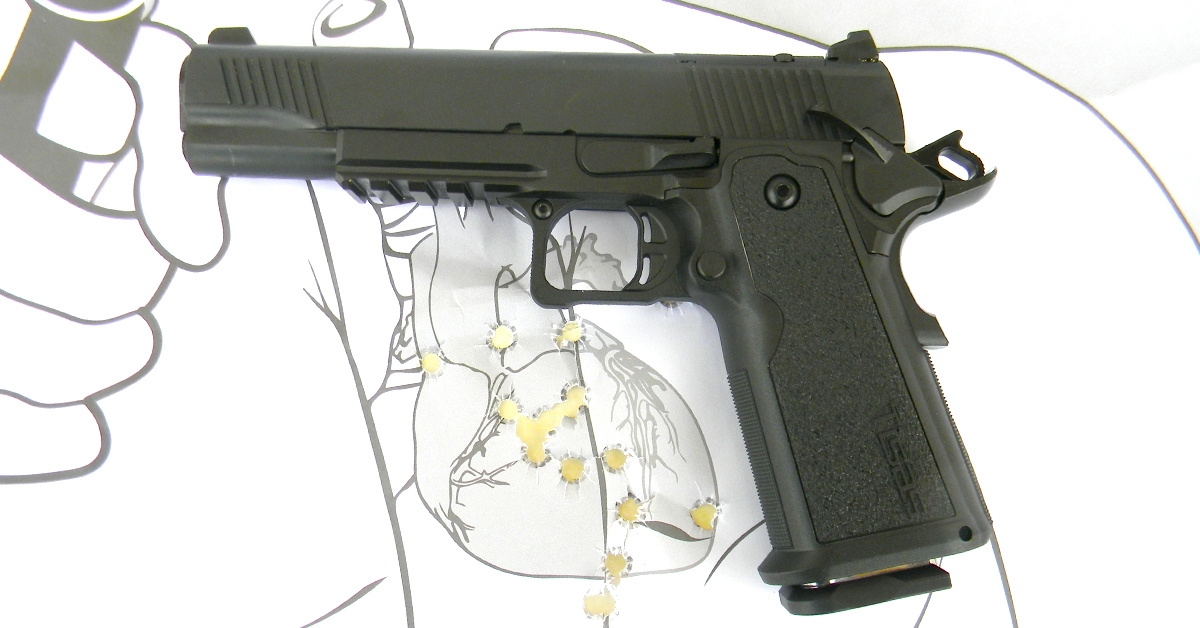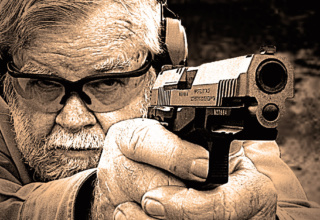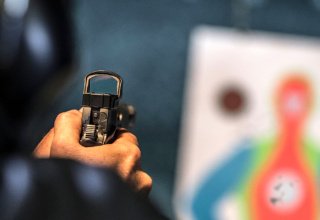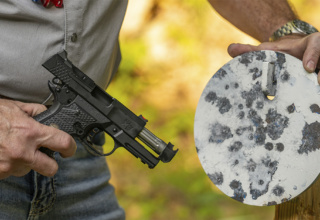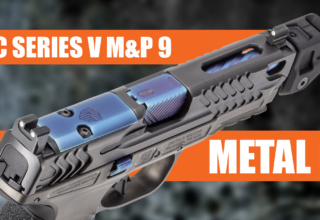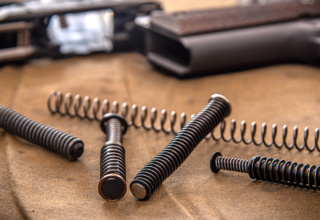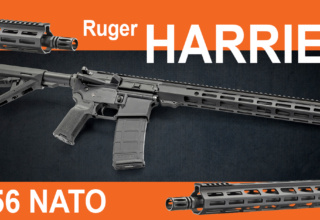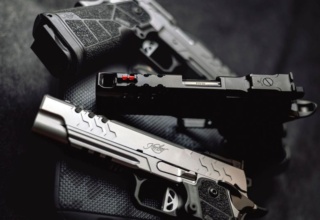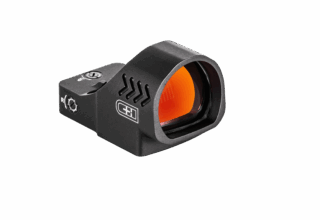A “1911” chambered for 9mm that’s really a 2011 delivering double-stack capacity and good target results if you watch your ammo selection..the 1911 Duty Double Stack from Tisas presents a mixed bag
by Bob Campbell
Recently, I tested one of the newest renditions of the 1911 — the Tisas 1911 Duty Double Stack. This pistol isn’t, arguably, a 1911 but that esoteric quantity known as a 2011. The double stack 9mm DS is chambered in 9mm Luger and features a magazine capacity of 17 cartridges. Parts of the DS are forged steel while the grip module is polymer. The forward section of the frame features a Picatinny accessory rail. The design is well thought out with good features. Among the standout features are grip panels that offer a good mixture of abrasion and adhesion. The front and rear straps are nicely checkered at 25 lines per inch.
First things first. The pistol arrived in a hard case with two steel magazines, a gun lock, manual, and bushing wrench. Since the 1911 trigger bar reaches around the magazine to trip the sear, engineering a trigger that accommodates a thicker magazine is a neat trick, so I checked this out first. This Tisas features a trigger action that feels light and crisp, breaking clean at just under seven pounds. I won’t wear out the phrase “it feels lighter than it actually registers” but it is an acceptable factory trigger.
The slide lock safety is ambidextrous — a nice touch necessary for left-handed shooters and weak-hand drills in competition. The slide lock safety is crisp in operation with a firm indent. The beavertail safety releases its hold on the trigger about halfway into its travel. Some shooters will allow the palm to raise off the grip safety when using a thumbs-forward grip. The 2011 pistol avoids this with a well-designed grip safety and a prominent memory bump. The magazine release is positive in function. The slide lock is slightly oversized, making for fast speed loads. The magazine well is generous. Quickly inserting a long-tapered magazine into this well is intuitive, making for rapid ammunition replenishment. Other design features include a Commander-type hammer and a good set of sights. The pistol features a standard barrel bushing, the original recoil system, and the original swinging link lockup. Field stripping follows standard 1911 procedures.
The pistol is optics-ready, an option I did not explore in this report. The slide is cut for the RMSc footprint. The finish is dull black. Tisas tells us the finish is a QPQ type. Some parts are Cerakote. I don’t know if we may expect long-term robust resistance to corrosion, but time will tell.
The Tisas DS is available in a carry model with a 4.25-inch barrel and a Duty model with 5-inch barrel. I chose the Duty model for this review. My pistol is light enough for constant carry at 32.5 ounces. The shorter pistol should be a good shooter and will handle quickly. The Duty will gain a little more velocity, has a longer sight radius, and should generate less felt recoil.
The pistol sits well in the hand and feels good in firing. All appearances indicate the DS isn’t made cheaply but intended to be affordable. As we will see, the Tisas DS is an easy gun to like and perhaps that is the improvement.
I examined the pistol closely before firing it and engaged in safe and careful dry fire. This is essential in marksmanship training, especially for those mastering a new type of handgun. The pistol’s polymer grip module is well fitted and makes for a nice confluence of design and function. I also practiced rapid speed loads in depth with the pistol. The magazine well and magazines are conducive to fast mag swaps, and in all modesty, I became pretty fast with this combination. While the pistol is a 2011 by definition, the controls and operation are second nature to any 1911 fan. For the beginner, the ergonomics will be as familiar to you as they are to me, with practice.
During testing, the trigger proved useful for both speed shooting and precision shooting. Take-up is modest before the trigger breaks the sear. Reset is rapid and clean.
The pistol is simple enough to break down for cleaning. The Tisas DS uses a standard barrel bushing. Using the supplied barrel bushing wrench, the barrel bushing is removed, the slide lock bumped out, and the slide moved forward off the frame. Twist the barrel bushing to remove the barrel through the front of the slide. The guide rod and recoil spring are easily removed. There were no visible tool marks internally.
The next step was to gather a likely supply of ammunition and evaluate the pistol through firing with a diverse selection of different bullet weights and velocities. I selected Blazer 115-grain FMJ, Winchester 115-grain FMJ white box, Federal American Eagle 124-grain FMJ, and Fiocchi 147-grain FMJ as the break-in/evaluation ammunition. The magazines were not difficult to load to a full capacity of 17 cartridges. I often load similar magazines to 15 rounds for convenience. These I topped off without strain on the digits. The pistol was lightly lubricated along the frame rails, slideway, cocking block, and barrel bushing.
Firing began at the seven-yard line. The pistol came on target quickly, offering a good natural point and rapid presentation from concealed carry. Draw, get on target, press the trigger, and you have a hit. I moved from seven to ten yards and back, running double taps, hammers, controlled pairs, and triples. The pistol is docile in recoil and almost effortlessly returns to the point of aim. It was not difficult to keep the point of impact centered on the target.
The pistol is a joy to fire and to use with good handling qualities. The Tisas DS never failed to feed, chamber, fire, or eject with Blazer 9mm ammunition. I stretched the definition of combat shooting to 25 yards with good results.
On the downside, the Tisas DS did not like Winchester 9mm case rims. (Note that years ago, among the first 9mm pistols to work reliably with a wide range of 9mm ammunition was the Browning High Power.) Diverse 9mm case length and case rim dimensions are sometimes not compatible with every handgun — although they should be. The Tisas failed to extract Winchester cases about every 4th cartridge. I also fired a 20-round box of Black Hills 124-grain JHP +P and suffered a single short cycle. I have never experienced a failure of any type with Black Hills ammunition, and this is my favorite BHA load. Surprisingly, the pistol fed low velocity 147-grain FMJ loads fine. There are two ways to go when you have malfunctions. You may get disgusted and give up or keep trying.
I took a break, re-lubed the piece, and loaded defensive-type ammunition for a reliability and accuracy test. This test consisted of a magazine each of Hornady 115-grain Critical Defense, Federal 124-grain HST, and Fiocchi 147-grain JHP. As a +P loading, I included the Hornady American Gunner 124-grain +P.
Firing these loads was uneventful. The standard pressure loads felt much the same, with modest recoil and a subdued muzzle signature. The +P load did not push back unduly but you could feel a slight increase in muzzle rise. Fire, get the sights back on target, allowing the trigger to reset during recoil, and you have a good cadence of fire. These jacketed hollow point loads never failed to feed, chamber, fire, or eject…for the most part. I had two short cycles in this phase. I have also fired the Remington UMC FMJ 9mm with good results and a mix of handloads with less stellar results. The pistol needs an extractor tune before it will be 100-percent. I also think that the magazine should have not been as loose in the magazine well. It needs a tighter magazine catch.
The final step was firing for absolute accuracy. I was in the groove from handling the trigger and maintaining the sight picture. Three loads were tested. The Hornady 124-grain XTP, Federal 124-grain Hydra Shock, and Fiocchi Defense Dynamics 147-grain. I settled into a benchrest with the MTM K-Zone shooting rest. I took careful aim at a 25-yard bull’s eye and pressed the trigger. I fired two five-shot groups with each load. Results were good. The Tisas DS is capable of good accuracy rated on the curve for the price range. The Hornady XTP load put five shots into 1.9 inches — the best of the test. The Federal Hydra Shock was only slightly larger, and the Fiocchi heavyweight came in at 2.6 inches.
The pistol features an accessory rail, so be certain to specify the pistol is a rail gun when ordering a holster. I used the Wright Leather Works Outsider paddle holster during the evaluation (again, be certain to specify 1911 rail gun!). This is my favorite paddle holster, bar none. It is a gorgeous leather holster mated to a G Code Kydex paddle. The holster features superb stitching that leaves no room for a loose fit. Molding/boning to the individual firearm is first class. A holstering welt assures a proper re-holster without looking at the holster mouth. A sweat guard aids in protecting the body from the handgun and helps guide the pistol in during the re-holster. The sweat guard also aids in a sharp draw. An easy on and easy off holster that locks securely on the waistline is a good thing to have. Did I mention the draw is sharp?
As I fired the Tisas, I felt it would make a good pistol for many forms of competition. As a friend said, you don’t really have to rate the trigger action — it will be replaced or modified for competition use. Just the same, a smooth 7.1-pound trigger with rapid reset is a good factory trigger. The trigger is useful as issued and works well for most applications. The sights are good. The front dovetail would be difficult to change while the rear sight rides in a dovetail that would be easier to swap. It is GLOCK-compatible while the dovetail front sight is not.
For personal defense or home defense use, a 17-shot 9mm is a good thing. The pistol is easy to use for a trained shooter and accurate enough for any foreseeable chore. I like the pistol, and it has a role. My experience is that this Tisas is not 100-percent reliable with every type of ammunition, which is a concern depending on the task at hand. My pistol may be an anomaly, yet another shooter had similar problems. Another found his to be competition-ready with zero problems. I may have witnessed an old-style 1911 break and incompatibility with some loads.
The magazine should ride higher and the extractor should be better tuned. Just in case you are wondering, I took a cheap parts gun — a Poly 80 9mm — and it processed loads that the Tisas did not. I eliminated all variables. Getting into the game on the cheap is viable with this pistol but be aware that it may need tuning.
What I Like
- The pistol doesn’t kick! Recoil is practically absent. Combat accuracy is good.
What I Don’t Like
- It should have operated reliably with every load. It will need tuning to be reliable enough for competition.
What I Would Change
- I would redesign the magazine catch for a tighter fit, holding the magazine higher. This is a not-uncommon problem addressed by a high quality, higher mag catch from EGW. I would also change the extractor to a Wilson Combat type.
Compare To
- The kick here is that all other guns similar to the Tisas DS cost more…a lot more. The Springfield Prodigy has a better trigger and runs well at $1,299 to $1,400 online prices. You could build up a nice gun — a great gun — beginning with the Tisas at $700. But you must have that bent. In that vein, perhaps it is like the Essex frame 1911s I built up by the dozens. Some were exceptional. Others not so much.
Tisas 1911 Duty Double Stack Specifications
- Caliber: 9 mm
- Barrel Length: 5 in., 1:10RH twist, button rifled
- Barrel Material/Finish: 4140 forged and machined, hard-chrome
- Frame Material: forged 4140 carbon steel
- Slide Material: forged 4140 carbon steel
- Grip Module: reinforced polymer, glass filled
- Trigger: SF skeletonized, black finish, 4.75-lb. pull
- Finish: QPQ slide, Cerakote black (H-146) frame and small parts
- Front Sight: white dot, Tisas dovetail cut
- Rear Sight: serrated black, GLOCK dovetail
- Optic Mount: 1/3 co-witness, direct 507k/RMSc footprint, M3 x 0.05 threads
- Magazine: OEM checkmate, 17-rd. capacity
- MSRP: $799.99

